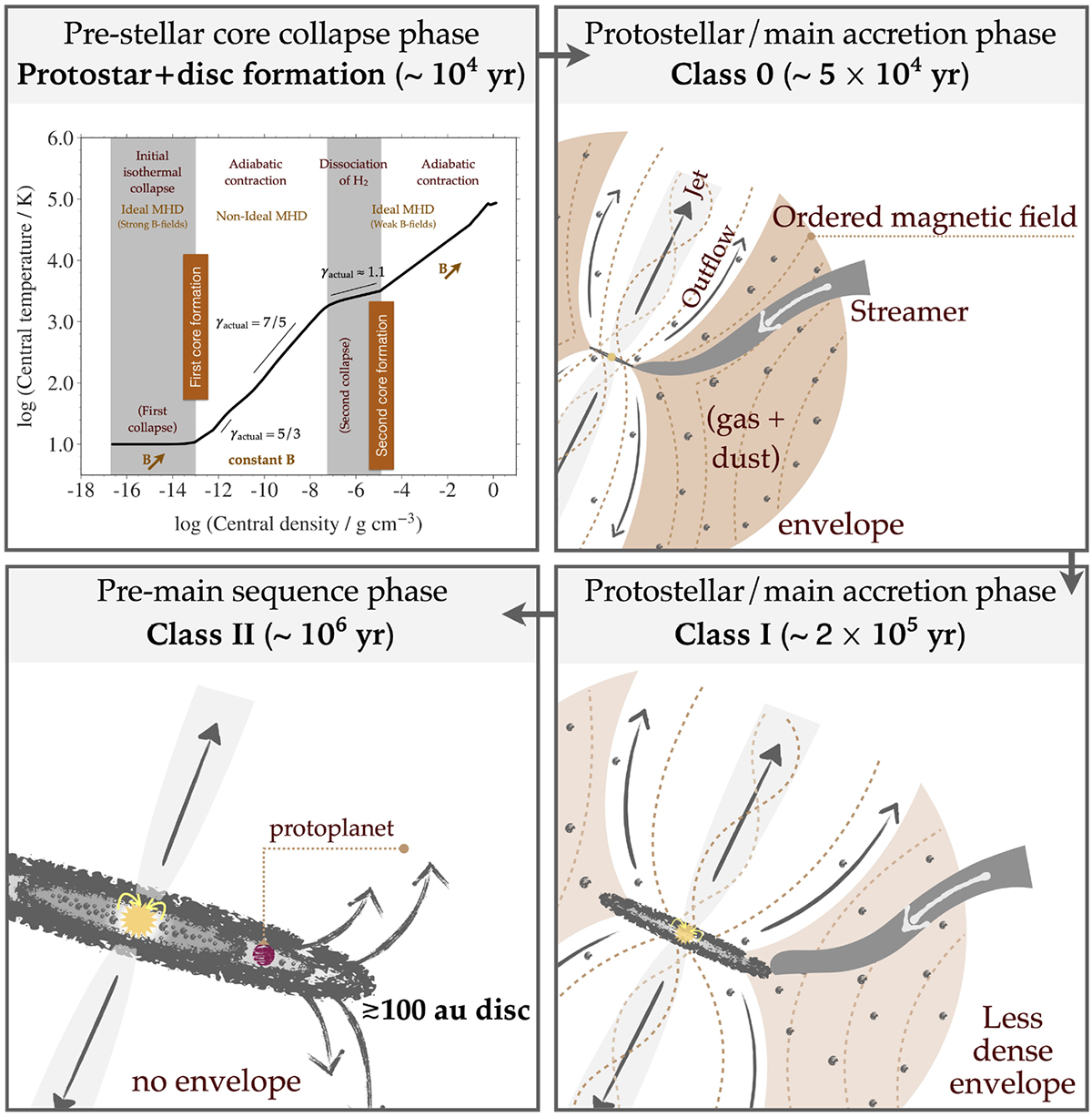Fig. 1.

Download original image
Schematic of the evolutionary sequence for the formation of a solar-type star, starting from the collapse of a molecular cloud core and until the formation of a young stellar object. The top left panel shows the evolution of central gas temperature as a function of density during protostellar formation (reproduced from Bhandare et al. 2020). The collapse leading to the formation of the first and second cores is characterized by a weak increase of temperature during the increase in density. The top and bottom panels on the right show the main accretion phase, divided into the Class 0 and I stages, during which the star gains its mass and the disk is assembled, while both are still embedded in the parent envelope (also called protostellar core, after Andre et al. 2000). At these stages, outflows and jets are also observed. Additionally, asymmetric accretion, sometimes funneled via streamers to the young star-disk system can also be seen. The bottom-left panel shows the Class II stage, where the young star is still surrounded by a protoplanetary disk, but the envelope has been removed.
Current usage metrics show cumulative count of Article Views (full-text article views including HTML views, PDF and ePub downloads, according to the available data) and Abstracts Views on Vision4Press platform.
Data correspond to usage on the plateform after 2015. The current usage metrics is available 48-96 hours after online publication and is updated daily on week days.
Initial download of the metrics may take a while.


